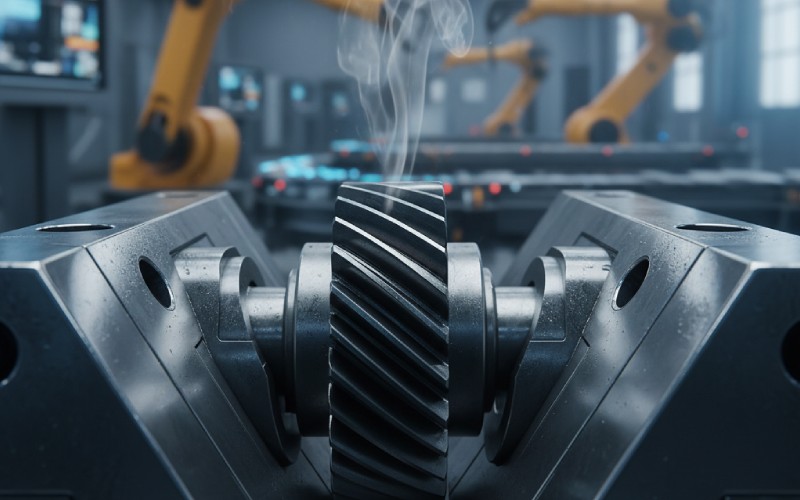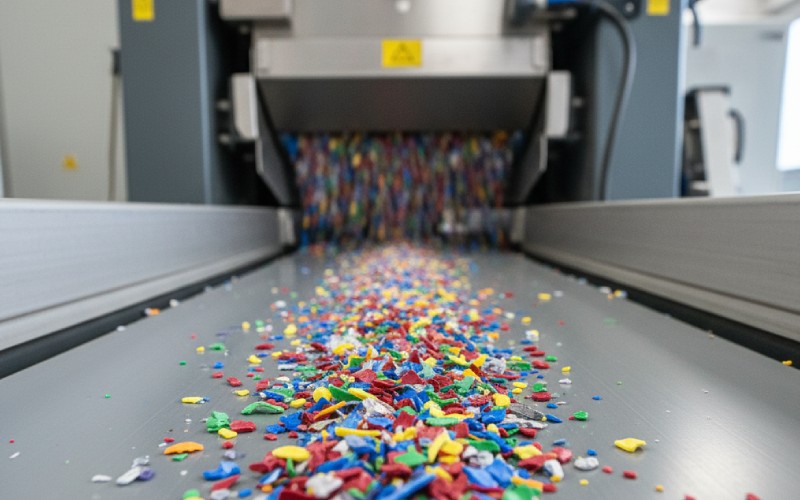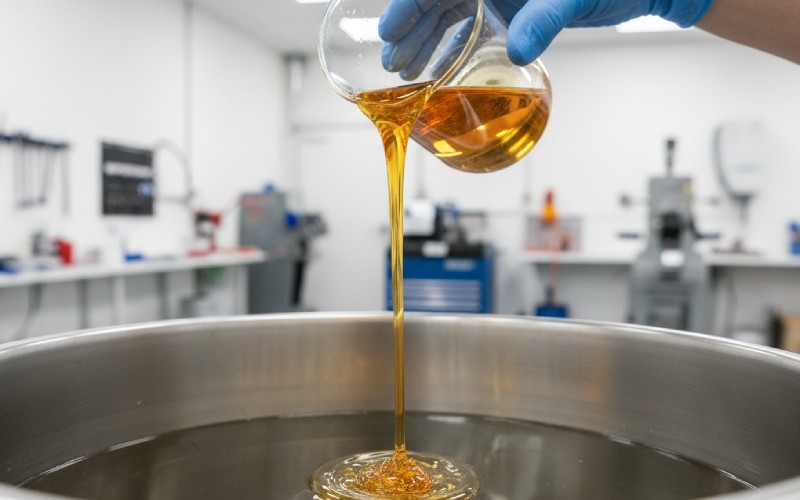Let Istar help you get started on your project with our experience and know-how!
Upload your design files and production requirements and we will get back to you within 30 minutes!

Not all plastics are made the same way. The two main types are thermoset plastics and thermoplastic materials. If you pick the wrong one, you can lose time and money. This article will help you see the differences in a simple way. Keep reading to learn how to choose the very best plastic for your job. This will help you avoid making expensive mistakes.
You can think of a thermoplastic like a piece of chocolate. When you make it hot, it turns into a liquid. When it gets cool, it turns back into a solid. You can do this again and again. A thermoplastic is a polymer that does the same thing. It gets soft and easy to shape when it is heated up. Then, upon cooling, it becomes hard again. This means you can heat and reshape a thermoplastic over and over.
These kinds of plastics and thermoplastics begin as little plastic beads. They are solid at room temperature. When a company wants to make something, they heat the beads. The plastic melts into a soft goo that can be put inside a mold. Since you can melt and use them again, thermoplastic materials are usually simple to recycle. Some common kinds of thermoplastic you see every day are polypropylene, polyethylene, pvc, polystyrene, and nylon. Other thermoplastics include acrylic.
Now, you can think of a thermoset like a loaf of bread. You start with wet dough. You put it in a pan and put it in the oven. The heat makes a chemical change that turns the dough into solid bread. After it is baked, you cannot change it back into dough. A thermoset plastic does the same thing. It begins as a liquid resin and is heated up to harden.
This heating step is called the cure. During the cure, the tiny parts inside the thermoset material make very strong connections. This is called a cross-link. This action makes the thermoset very tough and hard. After a thermoset part is made, you cannot melt it or change its shape. The change is for good. If you try to heat it again, it will just burn. Because of this, thermosets do not melt. Well-known thermosetting polymers are epoxy, polyurethane, silicone, and phenolic. The chemical structure of a thermoset polymer is changed forever after it sets.

The primary difference is in how each plastic handles heat after it has been made. A thermoplastic can soften and be melted again. A thermoset cannot. This is the main material difference. A thermoplastic is made of long, separate polymer chains. These chains can move past one another when they get hot. This is what lets it soften when heated.
A thermoset, on the other hand, makes strong chemical bonds during the curing step. These strong bonds during the curing process join everything together into one big piece. You can picture it like a spider’s web. This is why a thermoset is so tough and why it cannot be melted. The difference between thermoset and thermoplastic is all about this chemical change. The thermoplastic and thermoset materials act very differently because of it. A thermoset polymer is locked into its shape.
Here is an easy-to-read table showing the differences between thermoset and thermoplastic polymers:
| What it is like | Thermoplastic | Thermoset |
|---|---|---|
| How it reacts to heat | Gets soft and melts | Does not melt, might burn |
| Can it be reshaped? | Yes, many times | No, just one time |
| How its parts are linked | Long, separate chains | A strong, linked network |
| Can it be recycled? | Usually easy to recycle | Very hard to recycle |
| How it starts | Solid beads | Liquid resin |
| How strong it is | Pretty strong | Very, very strong |
Making parts from a thermoplastic or a thermoset uses different steps. Thermoplastic materials often start out as little solid balls. These balls are melted down. Then, they are pushed into a mold. A common way to do this is called extrusion. In this method, the melted plastic material is pushed through an opening with a special shape. It is like squeezing toothpaste out of a tube.
Thermosetting polymers are not the same. They are usually stored in liquid form. This liquid resin is mixed with a special liquid that starts the hardening process. This mix is then poured or pushed into a mold. Methods like resin transfer molding or reaction injection are used for this. Heat is then used to start the curing process and harden the resin. The part is then a solid thermoset.
Yes, you can use the injection molding method for both of them. But the injection molding process is not the same for each one. It is a very common way to make parts from either a thermoplastic or a thermoset.
For thermoplastic injection molding, solid beads are melted inside a hot tube. A turning screw pushes the melted thermoplastic resin into a cold mold with a lot of pressure. The plastic gets cool and becomes solid. The mold then opens up, and the finished thermoplastic parts come out. The important part is to heat the plastic first and then make the mold cold.
For thermoset injection molding, the method is almost the other way around. The thermoset liquid resin begins at a normal temperature. The injection screw pushes this liquid into a very hot mold. The heat inside the mold makes the thermoset undergo a chemical reaction and cure. This is also known as reaction injection molding. The important part here is using a hot mold to make the part. This plastic injection method is great for making strong thermoset parts with lots of details.
When you look at the physical properties, you can see why you might pick one plastic over another. Most of the time, a thermoset is stronger than thermoplastics. The strong linked parts in a thermoset give it amazing strength and make it very stiff. This also gives it great dimensional stability. That means it is very good at keeping its shape, even if you push on it or it gets very hot.
A thermoset usually has better chemical resistance as well. This means strong chemicals do not hurt it easily. Because of how they are made, thermoset polymers are able to withstand high temperatures without changing their shape. This gives them great thermal stability. A thermoplastic can be strong, but it will begin to soften when the temperature is much lower. The material properties of a thermoset make it the perfect choice for hard jobs.
There are many great reasons to use thermosets. The advantages of thermosets make them the very best choice for some kinds of products. Because a thermoset is so strong, it can be used to make parts that need to last a very long time and handle a lot of pressure. They do not bend or change shape easily.
Another big good point is that they can handle heat very well. Many thermoset products are used in cars and home machines because they will not melt when they are next to a hot engine or heater. Thermosets offer a great look, too. They can be molded into very tricky shapes that have a smooth and shiny surface. They also do not get scratched easily and are not hurt by chemicals. This high level of performance makes any thermoset material a top pick for tough jobs that need great dimensional stability and chemical resistance at a high temperature.
This is one big way that the two plastics are very different. The recyclability of a thermoplastic is one of its greatest features. Because you can melt it down and reshape it, it is simple to recycle a thermoplastic. Old bottles, tubs, and parts can be melted and made into brand new things. This is very good for our planet.
A thermoset is much more difficult to recycle. Because it goes through a chemical change, you cannot melt it. After a thermoset is made, it stays that way forever. You cannot soften it. You can grind an old thermoset part into a powder. Then you can use it as a filler to add to other materials. But you cannot recycle it back into a new part of the same quality. So, when we talk about being good for the earth, thermoplastic materials are the clear winner.
You can find both a thermoset and a thermoplastic in many things around you. Knowing the examples of thermoset and thermoplastic materials helps you see how they are used in our world. They both have a very wide range of applications.
Common thermoplastic examples are:
Thermoset plastics and polymers include:
This range of applications shows how these two kinds of polymer are used for everything from cookware to carpets and laboratory equipment. The plastics and polymers include epoxy, polyurethane, and a lot more.

So, how do you know if you need a thermoset or thermoplastic? Choosing the best material depends on what you want your product to do. First, you must understand the differences between these thermoplastic and thermoset materials. The big question in the thermoset vs thermoplastic choice is about how the part needs to work and where it will be used.
You should pick a thermoplastic if you need:
You should pick a thermoset if you need:
Thinking about these things will help you choose from the material options. Knowing the difference between thermoplastics and thermosets is the key to making the right pick for your job. This guide on thermosetting plastics and thermoplastics should make the thermoplastic and thermosetting choice a lot easier.
Here is a fast review of the most important things from the thermoset vs thermoplastic talk: